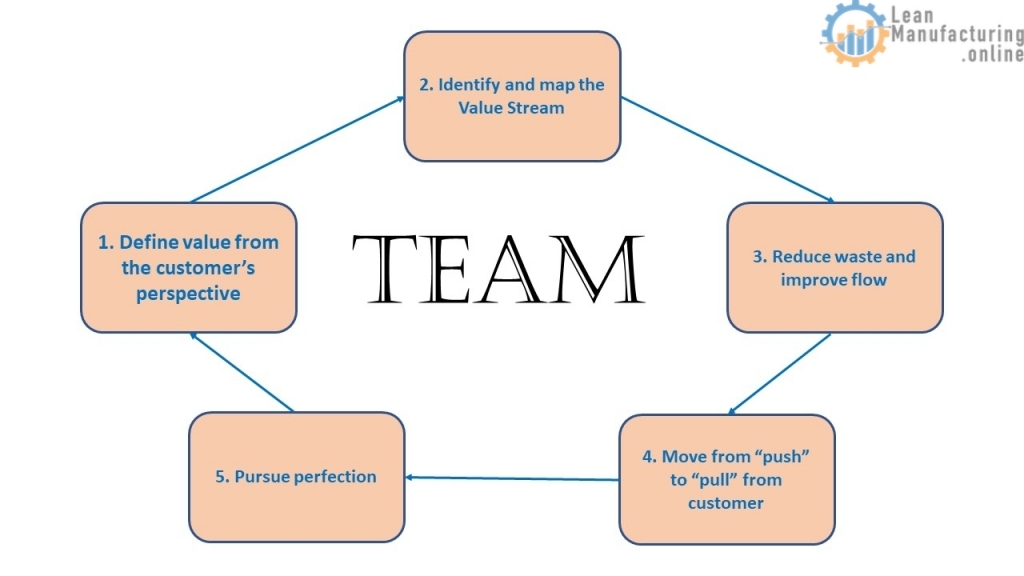Principle #1. Specify and Focus on Value
- Any activity or task that transforms a product or service in such a way that the customer is both aware of it and willing to pay for it;
- Can be defined only by the ultimate customer;
- It is meaningful only when expressed in terms of a specific product or service with specific capabilities at a specific time that meets the needs of a specific customer.
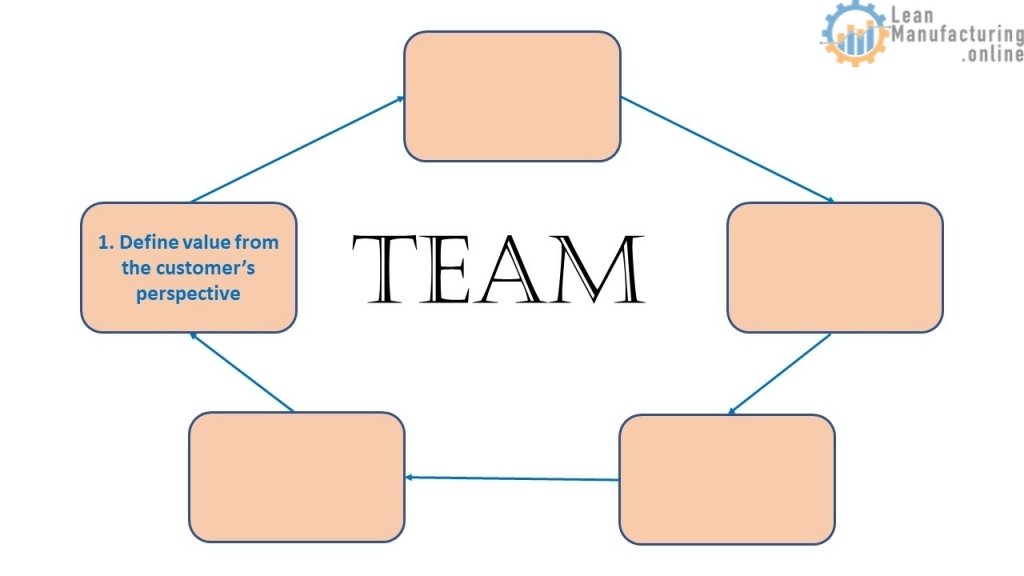
Principle #2. Identify the Value Stream
- The set of all the specific actions required to bring a specific product through the physical transformation to deliver end product or service to customer;
- Also includes the information management processes that support the physical process;
- Focuses on specific actions and how they interact with each other and which create value;
- Start with a complete and detailed “Current State Value Stream Map” (VSM) first and identify opportunities which leads us to “Future State VSM”.
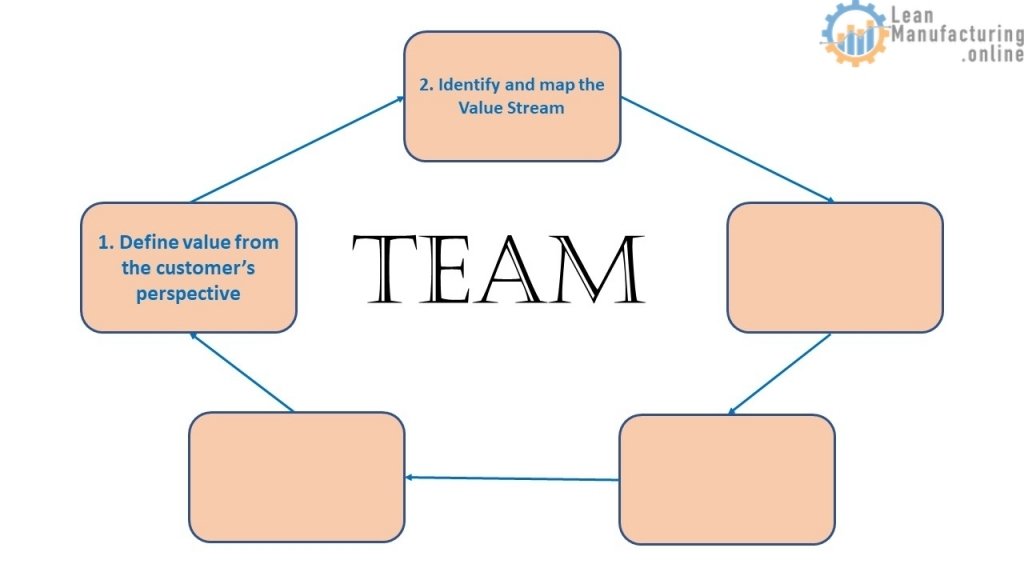
Principle #3. Enable Flow
- Making the value-creating steps flow;
- Eliminate interruptions and waiting in the process;
- Move processing of sequential tasks close to each other;
- Ensures focus on the product and/or service and downstream needs;
- Almost always results in accomplishing tasks more efficiently and accurately (first-time right).
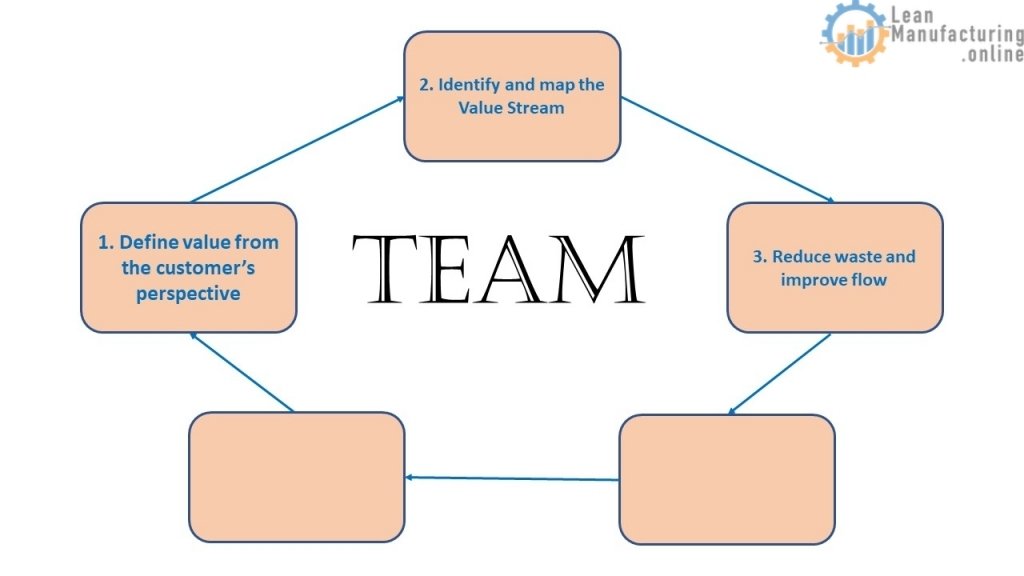
Principle #4. Allow Pull
- The ability to design, schedule and make or deliver exactly what the customer wants just when the customer wants it;
- Means you can be less reliant on long-term sales forecast by making what customer wants when they tell you they need it – “just in time”;
- You allow customers to pull the product or service from the value stream rather than pushing it to them… hoping that it is what they want, when they want it, in the quantity they want it, etc…
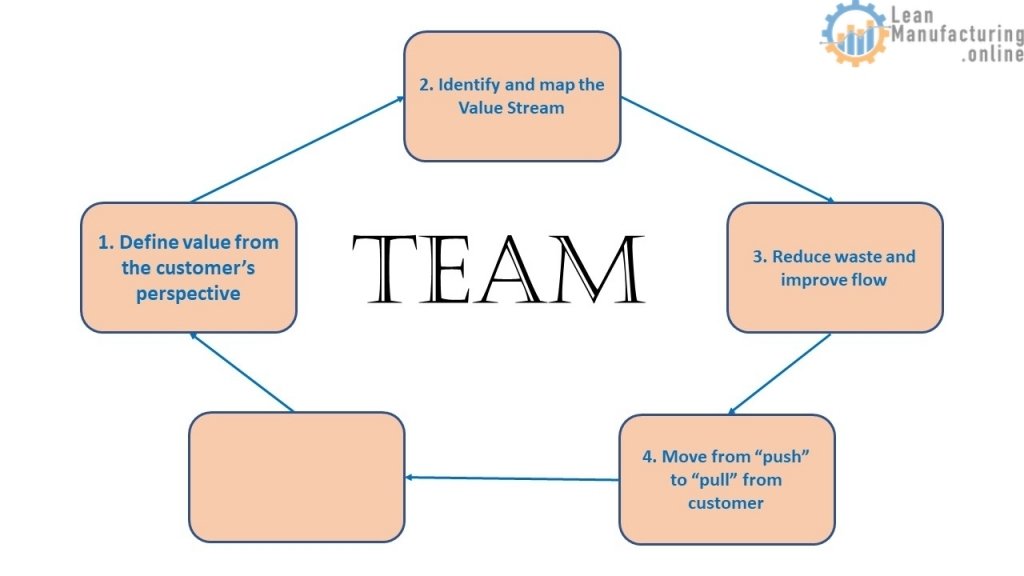
Principle #5. Pursue Perfection
- The four initial principles interact with each other in a circle of continuous improvement;
- The harder you pull, the more impediments (constraints and “muda”) are revealed and therefore targeted for removal;
- Dedicated team in direct dialogue with customers will always find ways to better specify value more accurately and therefore be in a better position to identify and remove #muda;
- The key to the pursuit of perfection is transparency – line of site at every level of the end-to-end value stream… upstream suppliers to downstream customers.
